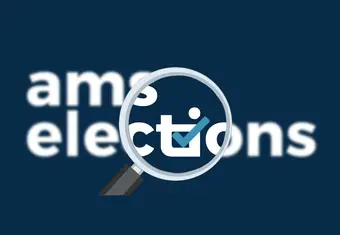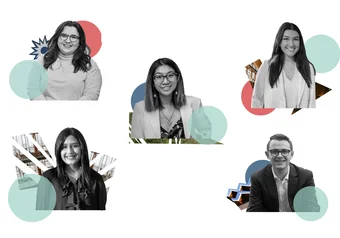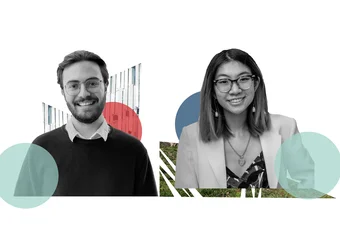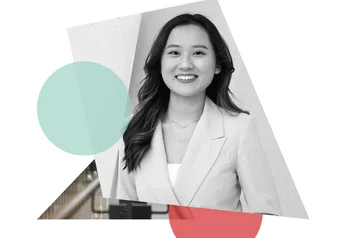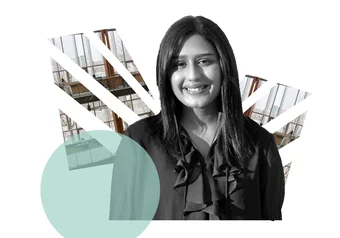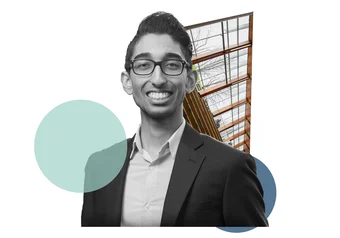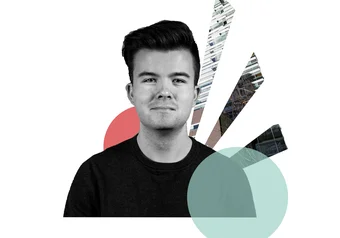Candidates say a lot of numbers, figures and claims at AMS elections debates, and some of them are hard to understand or verify.
That’s why The Ubyssey is fact-checking the big claims candidates make at debates. During campaign period, we’ll be updating this article with more claims as candidates make them.
Here, we’ve covered the first and second debates, which included the races for AMS president, VP academic and university affairs (VP AUA), VP administration, UBC Board of Governors (BoG) student representatives, VP external, VP finance and Senate.
We dove into claims candidates made about topics including tuition increases, the return to in-person learning and even the AMS election itself.
President
Cole Evans: “Before this year, most of the [Equity, Diversity and Inclusion] work that was being done in the organization was coming out from almost exclusively the VP External’s office.”
True. In 2019, then-VP External Cristina Ilnitchi headed the revamp of the AMS Equity Caucus and the VP external office was tasked with creating an Equity Plan and consulting affected students and communities. Evans has since taken the lead.
Evans: “This year is an outlier … in the last five years we’ve had numerous uncontested executive races.”
Mostly true. Three of the last five VP finance races (2020, 2017, 2016) have gone uncontested, and this year will continue the trend.
In addition, last year’s VP AUA race was uncontested and went to a special election after the only candidate dropped out of the race. Max Holmes ran for VP AUA uncontested in 2018. Holmes initially won the position in a special election against Franz Kurtzke after Daniel Lam resigned in 2017. Lam himself ran uncontested.
VP Academic and University Affairs
Eshana Bhangu: “Currently, GSI is distributed based on enrolment, which serves as an incentive for faculties to over-enrol and give the bare minimum to graduate students.”
Mostly true. Graduate Support Initiative (GSI) Awards are distributed based on a faculty’s share of weighted registration over the last three years. PhD candidates earn four points for their faculty, while master’s students writing theses earn two points and course-based master’s students earn one point — “high cost-recovery master’s” students are removed from the equation entirely.
Shivani Mehta: “... After May, [students] will no longer be able to have free quarantining services provided to them.”
True, but starting March 1. The Walter Gage Self-Isolation Package, while offered to students for free this past summer, will cost $76 a day plus taxes as of March 1, 2021.
VP Administration
Lauren Benson: “We’re the only student union that has an art collection.”
Hard to verify. Hatch Gallery Director Maxim Greer previously told The Ubyssey that “it’s a rarity to have a permanent collection that’s owned by students,” but that doesn’t mean we’re the only ones. It would be nearly impossible to know whether or not a single other student union has an art collection.
Benson: “Last year’s voter turnout crashed to 11.6 per cent.”
True. Voter turnout was 11.6 per cent in the 2020 AMS General Election, compared to 21.7 per cent in 2019.
Lawrence Liu: “The current policy does state [that] clubs of less than 25 active members could be a basis for deconstitution.”
True, as of a March 2020 update to the Operations Committee policy update. Before that update, having fewer than 10 members could have been grounds for deconstitution.
Liu: “Regarding the new sustainability corridor project, it’s actually $28,000 that are currently pending council approval.”
False. Liu was trying to correct Benson’s statement that the budget for the Interactive Sustainability Centre was $26,000, but she was right. This project, currently still pending approval, is part of the plan for a “sustainability corridor” in the basement of the Life Building.
Board of Governors
Korniiashik: “A 100 per cent decrease [in tuition] is approximately $5 million in costs to university.”
Korniiashik misspoke, but his claim could still use a bit more depth. His platform states that a $100 decrease would cost the university $5 million. While UBC Vancouver officially has 58,462 students, counting only undergraduates, master’s and PhD students would leave us at 50,076. Multiplied by $100, the price tag is about right. Such a move would subtract 9.3 per cent of budgeted revenue from tuition increases — that is, a 3.4 per cent reduction of incremental revenue from international students, but 34.7 per cent of incremental revenue from domestic students.
Korniiashik: “It seems like we have five times more international students at our university than Indigenous students.”
False. Recent PAIR data shows that there are 1,330 Canadian Aboriginal students (as defined here) enrolled at UBC Vancouver, compared to 15,504 international students. That means there are actually over 11 times more international students than Indigenous students enrolled at UBC.
Georgia Yee: “Operational grants from the province have been steadily going down over the years … The operating budget used to be 90 per cent funded by the provincial government in the 1970s, [but] this has been reduced to 36 per cent.”
Almost true. Provincial funding as a share of budgeted operating revenue peaked at 86.1 per cent in 1977/78. The 36 per cent figure comes from the 2020/21 budget outline, but this includes both UBC Vancouver and UBC Okanagan. Provincial funding’s share stood at 41.5 per cent for the 2019/20 financial year, 43.5 per cent for 2018/19 and 46.1 per cent for 2017/18 for UBC Vancouver alone.
VP External
Saad Shoaib: “The federal government recently established a permanent transit fund worth $3 billion annually towards infrastructure projects across Canada.”
Mostly true. Plans for a permanent transit fund of $3 billion per year were released by the federal government earlier this month, but disbursements are slated to begin in 2026.
Shoaib: “We [at Undergraduates of Canadian Research-Intensive Universities (UCRU)] got almost $1 billion to student and youth employment and the removal of interest rates on federal student loans until 2022.”
True. After UCRU lobbied for support towards student financial aid and jobs for students and youth, the federal government invested $575.3 million into the Youth Employment and Skills Strategy over the next two years, as well as $447.5 million in the Canada Summer Jobs program. The federal government also removed the interest on Canada Student Loans from 2021 to 2022.
Shoaib: “Back in 2018, [the provincial government] invested $450 million into student housing.”
True. In 2018, the BC Student Housing Loan Program gave $450 million to public post-secondary institutions in the province to build up to 5,000 units of student housing over six years.
VP Finance
Mary Gan: “Salaries and wages consist of 85 per cent or higher of [the] student government budget.”
Potentially misleading or false. Expenditures for “student government” are defined within the AMS’s January Budget Reforecast in two ways. The first definition, which is included under the “student government” sheet, refers to AMS Council, its various committees and advisory boards and the ombudsperson. However, the second definition, which is denoted on the summary page, includes expenditures for the executive committee, archive and research, elections and referenda and the policy advisor. We’ll break down each of them.
Following the first definition, salaries and wages of student government add up to $43,759, and adding benefits brings the total to $44,587, only 22.2 per cent of the student government budget. When adding in the $72,000 allocated to AMS Council legal fees and $53,347 to the Indigenous Committee, however, the sum comes out to $169,934, which is 84.7 per cent of the student government budget.
Following the second definition, salaries and wages are $567,560 and $618,911 with benefits, making up 54.4 per cent of the student government budget. Again, adding in legal fees and all Indigenous Committee expenditures – salaries and wages are not separated within its budget – the sum comes out to $744,258 or 65.5 per cent of the student government budget.
Senate
Dante Agosti-Moro: “The Senate currently mandates that all committees, with exception of the ones that deal with confidential matters like the appeals committee, must post their minutes.”
True: Rule 38 in the Rules and Procedures of the Vancouver Senate states that “Unless a committee resolved otherwise either for a particular matter or for a category of matters, the minutes of committees of Senate shall be made publicly available for all meetings that occur after 1 January 2018.”
Julia Burnham: “If we want to be holding the Senate accountable to this Indigenous Strategic Plan, we need to have this plan endorsed by the Senate, which is something that has not yet occurred.”
True. While the Senate Teaching and Learning Committee discussed potential modes of implementing the Indigenous Strategic Plan while it was being drafted, the plan itself has not yet been brought up before the Senate since its September release.
Emmanuel Cantiller: “What constitutes examination hardship [is] having three back-to-back exams within the span of 24 hours.”
True. Policy J-102, which Cantiller cited, states that “An examination hardship is defined as the occurrence of an examination candidate being faced with three or more formal examinations scheduled within a 24-hour period.”
Cole Evans: “I also am the only student who is the chair of a Senate standing committee, as chair of the Academic Buildings Needs committee.”
False. Max Holmes is chair of the Agenda committee and Chris Hakim is chair of the Vancouver Budget sub-committee. This fact-check was acknowledged during last night’s debate.
Evans: “I look at the website … and I can’t find [Senate] committee minutes from 2020 at all. Period.”
True. Of all standing committees, only the Academic Building Needs, Academic Policy, and Library subcommittees have posted minutes from previous years, but none from 2020 onward.
Mathew Ho: “Co-op programs haven’t been reviewed since 2005.”
Likely true. Co-operative programs-related definitions on the Senate website date back to May 17, 2004, and no evidence of further audits has come up since then.
Damir Korniiashik: “I believe that it’s very interesting how we have ten times less Indigenous students on campus than international students.”
Closer than last time, but still not the right number. At the Board of Governors debate, Korniiashik claimed there were five times more international students at UBC than Indigenous students. Recent PAIR data shows that there are 1,330 Canadian Aboriginal students (as defined here) enrolled at UBC Vancouver, compared to 15,504 international students. That means there are actually over 11 times more international students than Indigenous students enrolled at UBC.
The “ten times” figure still strays when we narrow our definition to international students paying international tuition. For undergraduate students paying international tuition under the International Student Initiative (no data is readily available regarding international graduate students), there are 13,520 international undergrads, more than 13 times the 1,021 Canadian Aboriginal undergrads at UBC Vancouver.
Shivani Mehta: “Right now, there are no boundaries or parameters around supporting students that are in different time zones [regarding exam hardship].”
True. Policy J-102 contains no mention of time zones.
Mehta: “Some tangible things that we need to be working towards are, for example, the Aboriginal Undergraduate Research Mentorship Program that they have at the UBC Okanagan campus, and [we] don’t have at the UBC Vancouver campus.
Misleading. While UBC Okanagan has the Aboriginal Undergraduate Research Mentorship Program, UBC Vancouver has the Indigenous Undergraduate Research Mentorship Program.
Anisha Sandhu: “Every year there are almost 100 applicants [to the UBC Dietetics Major], but there only very select seats.”
True. The LFS Dietetics website says that out of approximately 90–100 qualified applicants each year, the program only accepts around 36.
Georgia Yee: “UBC Okanagan has its own bridging program, [which] we can leverage to lower the barriers to recruiting and retaining Indigenous students.”
True. UBC Okanagan’s Access Studies Program seeks to transition Aboriginal learners into degree programs at UBC. While UBC Vancouver offers the UBC–Langara Aboriginal Transfer Partnership, it does not have its own bridging program.
Yee: “The Student Senate Caucus hasn’t posted on their Facebook since 2018.”
True.
Candidates will debate again on Saturday, February 27. This article is part of our 2021 AMS elections coverage.
First online
Share this article


